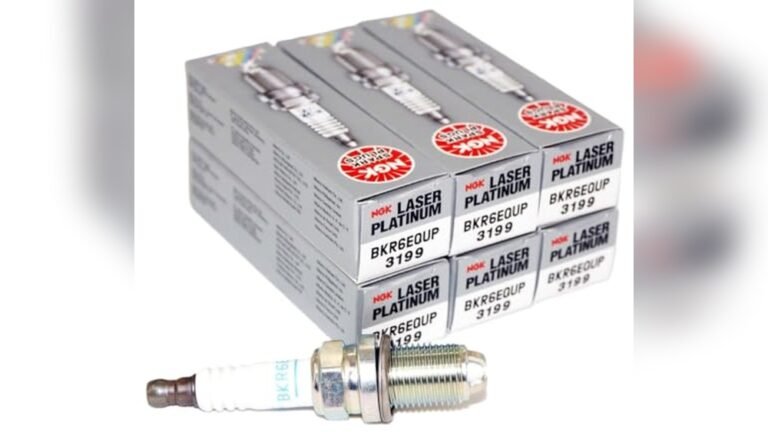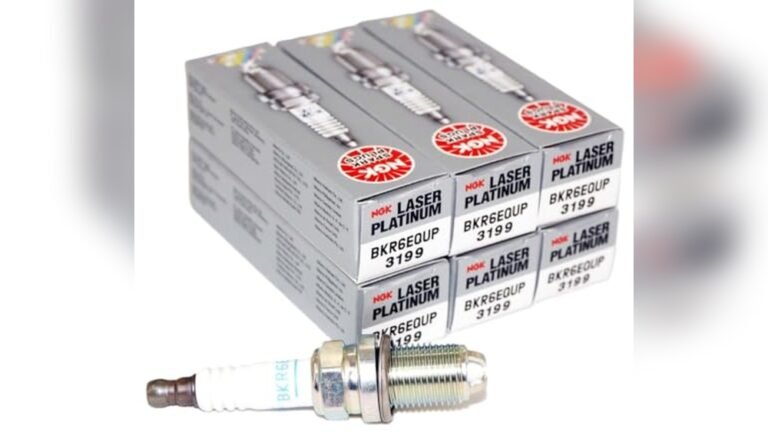Limp mode in BMW is a protective feature that restricts engine performance to prevent further damage. When a fault is detected, the vehicle limits power and speed.
Limp mode in BMW is an engine protection mechanism that reduces power and speed to safeguard against further damage. It engages when a fault is detected to prevent exacerbating any existing issues. This feature is designed to give drivers enough time to safely reach a repair facility without causing extensive damage to the engine or other components.
While in limp mode, drivers may experience reduced power and performance, and it is important to address the underlying issue promptly to restore normal functionality to the vehicle. Understanding limp mode and its purpose can help BMW owners respond appropriately when it is activated.
Identifying Limp Mode Symptoms
The symptoms of Limp Mode in a BMW can be easily identified. One of the most common symptoms is a sudden decrease in vehicle power. This can be noticed when the car feels sluggish and struggles to accelerate as normal. Another indicator is the activation of dashboard warning lights, such as the check engine light or transmission warning light. These lights usually indicate a problem with the engine or transmission and can be a sign of Limp Mode. Additionally, another symptom is when the transmission sticks in one gear and refuses to upshift or downshift. When this happens, the car may only be able to operate in a single gear, limiting its speed and performance. Identifying these symptoms can help diagnose the Limp Mode issue and ensure prompt repairs to get the BMW back to its optimal performance.
Causes Behind Limp Mode Activation
When a BMW goes into limp mode, it means the engine’s performance is significantly reduced to protect it from further damage. This usually happens when the car’s computer detects a fault or issue that could potentially harm the engine or transmission. Common causes of limp mode activation include engine management issues, transmission-related faults, problems with the throttle body, and faulty sensors or wiring concerns.
Engine management issues can include problems with the fuel system, ignition system, or exhaust system. Transmission-related faults can involve issues with the transmission fluid, torque converter, or solenoids. Problems with the throttle body can lead to reduced airflow and loss of engine power. Faulty sensors or wiring concerns can cause the car’s computer to receive inaccurate data, triggering limp mode.
If your BMW goes into limp mode, it’s important to have it diagnosed and repaired by a qualified mechanic. Ignoring the issue or continuing to drive the vehicle in limp mode can cause further damage and potentially lead to expensive repairs.
Limp Mode’s Role In Protecting Your Bmw
When your BMW goes into limp mode, it is important to understand its role and how it protects your vehicle. Limp mode is primarily designed to prevent further engine damage by limiting the engine’s performance. This can occur when the engine management system detects a fault or a potential problem that could cause harm to the engine.
One of the main benefits of limp mode is that it allows you to drive to a safer location or to a mechanic without risking a complete breakdown. By reducing the risk of abrupt vehicle failure, limp mode gives you an opportunity to address the issue before it escalates into a more serious and costly problem.
Limp mode works by limiting the engine’s power output and preventing certain features, such as the turbocharger or certain gears, from engaging. This reduces strain on the engine and minimizes the likelihood of further damage.
Overall, understanding limp mode and its role in protecting your BMW is essential for maintaining the longevity and performance of your vehicle.
Diagnosing And Addressing Limp Mode Triggers
When your BMW goes into Limp Mode, it can be a frustrating experience. Limp Mode is a safety feature that protects your engine from further damage when a major problem is detected. Diagnosing and addressing the triggers for Limp Mode is crucial to getting your BMW back to normal functioning.
Common diagnostic tools and methods can help in identifying the cause of Limp Mode. These include using a BMW diagnostic scanner or code reader to retrieve error codes, analyzing live data from the engine control unit (ECU), and conducting visual inspections of crucial components. However, it is important to note that interpreting error codes and diagnosing issues correctly requires expert knowledge.
Seeking professional assessment is highly recommended when your BMW enters Limp Mode. Qualified technicians have the expertise and experience to accurately diagnose the problem and identify the root cause. They have access to specialized diagnostic equipment and software that allows for a thorough analysis of your BMW’s systems.
Once the cause of Limp Mode is determined, typical repairs may include fixing or replacing faulty sensors or components, addressing issues with the transmission or throttle system, or resolving electrical problems. It’s crucial to address the underlying problem promptly to prevent further complications and ensure the smooth operation of your BMW.
Steps To Reset Your Bmw’s Limp Mode
When your BMW goes into limp mode, taking immediate action is crucial. Limp mode is a safety feature that protects your vehicle from further damage when it detects a serious problem. To reset the limp mode, you can follow these steps:
- Stop the car: When you notice the limp mode activation, find a safe spot to park your BMW and turn off the engine.
- Turn off all electrical systems: This includes headlights, air conditioning, radio, and any other electrical components.
- Wait for a few minutes: Give the car’s computer system time to reset itself.
- Restart the engine: Start the engine and see if the limp mode has been cleared. If the car is still in limp mode, it might be necessary to seek professional help.
If the limp mode issue persists even after resetting the computer system, it is recommended to consult a qualified technician or take your vehicle to an authorized BMW service center. They can diagnose and address the underlying problem that triggered the limp mode activation, ensuring the optimal performance and safety of your BMW.

Credit: www.reddit.com
Tips For Avoiding Future Limp Mode Issues
Regular maintenance is crucial for preventing Limp Mode issues in your BMW. By following a routine maintenance schedule, you can ensure that your vehicle is in top condition, minimizing the chances of encountering Limp Mode. This schedule should include regular oil changes, filter replacements, and inspections of crucial components such as the transmission and fuel system.
Another important aspect of avoiding Limp Mode issues is recognizing early signs of potential trouble. Pay attention to warning lights on the dashboard, unusual engine noises, or a decrease in performance. Addressing these issues promptly can help prevent them from escalating into full-blown Limp Mode situations.
Additionally, it is essential to regularly update vehicle software and hardware as necessary. BMW regularly releases updates that can improve the vehicle’s performance and reliability. Keeping up with these updates can help prevent Limp Mode issues that may arise due to outdated software or hardware.
Overall, by following a routine maintenance schedule, recognizing early signs of trouble, and staying up to date with software and hardware updates, you can effectively avoid future Limp Mode issues in your BMW.
Frequently Asked Questions On What Is Limp Mode Bmw
What Does Limp Mode Mean In A Bmw?
Limp mode in a BMW refers to a restricted power mode that the car enters when a potential issue is detected. It helps protect the engine by limiting its functionality. In this mode, the car will have reduced power, acceleration, and speed.
It’s crucial to address the underlying problem to return the vehicle to full performance.
Why Does My Bmw Go Into Limp Mode?
Several factors can cause a BMW to go into limp mode. Common causes include issues with the engine, transmission, or electrical systems. These problems can range from a faulty sensor to more serious mechanical issues. It’s important to have the car diagnosed by a professional to determine the exact cause and perform the necessary repairs.
How Do I Get My Bmw Out Of Limp Mode?
To get your BMW out of limp mode, you should start by turning off the engine and allowing it to cool down for a few minutes. After restarting the car, if the issue persists, it’s best to have it inspected by a qualified mechanic.
They can use diagnostic tools to identify the problem and recommend the appropriate solution.
Does Limp Mode Damage The Car?
Limp mode itself doesn’t typically cause damage to the car. However, it’s important to address the underlying issue promptly to prevent further damage to the engine or other vital components. Continuing to drive in limp mode without addressing the problem can potentially lead to more severe and costly repairs.
Conclusion
To sum up, understanding the concept of limp mode in BMW vehicles is crucial for any owner. Limp mode serves as a safety measure, protecting the engine from severe damage. By limiting performance and restricting the speed, the system allows drivers to address any underlying issues promptly.
If you encounter limp mode on your BMW, seek professional assistance to diagnose and fix the problem in a timely manner. Stay informed and ensure the longevity of your vehicle’s performance.






